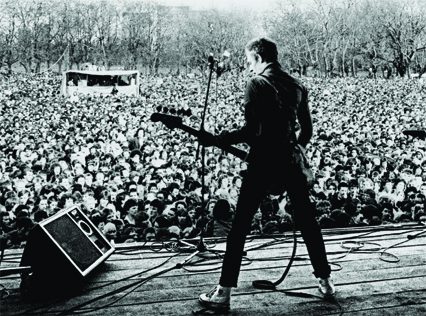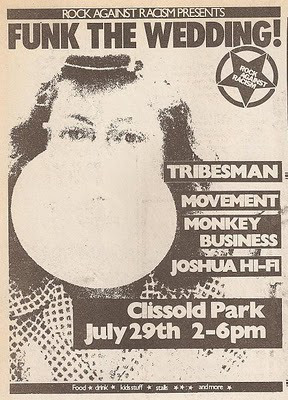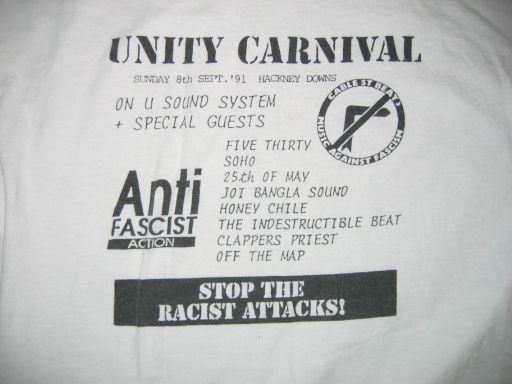
“The Park is called the People’s Park
And all the walks are theirs
And strolling through the flowery paths
They breathe exotic airs,
South Kensington, let it remain
Among the Upper Ten.
East London, with useful things,
Be left with working men.
The rich should ponder on the fact
Tis labour has built it up
A mountain of prodigious wealth
And filled the golden cup.
And surely workers who have toiled
Are worthy to behold
Some portion of the treasures won
And ribs of shining gold.”
An ode to Victoria Park, 1872
(from Victoria Park, East London: The People’s Park)
The text below was originally published as a pamphlet, bashed out for the Radical History Network meeting on “Community Empowerment and Open Green Spaces”, July 10th 2013. (I have a couple of the pamphlets left – drop me an email if you want one.)
It’s full of holes, a work in progress. Get in touch with additions, criticisms, comments.

1275 The area that is now London Fields was recorded as common pastureland adjoining Cambridge Heath. In 1540 the name London Field is found recorded as a separate item consisting of around 100 acres in changing ownership of land. London Field was one of the many “commonable lands” of Hackney where the commoners of the parish could graze their livestock on the fields from Lammas Day (Anglo Saxon for bread mass), August 1st, celebrating the first loaf after the crops had been harvested, to Lady Day, March 25th. This arrangement was known as Lammas Rights and was protected by law. (from here)
1700s In the Marshes towards Hackney Wick were low public houses, the haunt of highwaymen. Dick Turpin was a constant guest at the “White House” or “Tyler’s Ferry” and few police-officers were bold enough to approach the spot.
1750 onwards Clissold House (originally named Paradise House) was built, in the latter half of the 18th century, for Jonathan Hoare, a City merchant, Quaker, philanthropist and anti-slavery campaigner. (His brother Samuel was one of the founders of the Society for Effecting the Abolition of the Slave Trade.). The grounds of the house went on to become Clissold Park.
1793 Big open-air demonstration on Hackney Downs, in support of the revolutionary gains in France. The tutors Richard Price, Joseph Priestley and Gilbert Wakefield organised lectures on the French Revolution at the New College, a non-conformist academy (“by-word for revolutionary opinion”) at Lower Clapton.
1840 Abney Park Cemetery opens as the first fully non-denominational burial ground in Europe (where anyone could be buried, but especially non-conformists, dissenters etc). Many anti-slavery campaigners are buried there.
1845 Victoria Park is opened following a petition by 30,000 local people to Queen Victoria. “There was no bathing pool provided and local youths were in the habit of bathing – naked! – in the adjacent Regent’s Canal. Attempts to police such shocking behaviour were unavailing and within a few years a pool was provided in the park itself.” – Victoria Park, East London: The People’s Park
1848 Chartists meet at Bonners Park (near Victoria Park) to march on Parliament.
1860s Hackney Downs open space (originally common land) preserved as parkland as a result of pressure by the Commons Preservation Society.
1866 Widespread pickets and demonstrations for universal male suffrage as advocated by the Reform League during summer. After disorder at Hyde Park the Tory government banned all protest meetings throughout London. The ban was widely ignored; a huge “illegal” rally took place in Victoria Park.
1872 180 acres in Hackney are preserved as public open space and protected from the encroachment of development. Including Clapton Common and Cockhanger Green (now boringly called Stoke Newington Common).

In the 1880s the grounds of Clissold House and the adjacent Newington Common were threatened with development, and two prominent campaigners, Joseph Beck of The City of London and John Runtz of The Metropolitan Board of Works (MBW) persuaded the Board of MBW to buy the land and create a public park. (from Clissold Park User Group, as was the image above)
1885 William Morris speaks at Victoria Park:
The political culture of the day was not simply confined to the clubs and indoor meeting places. The open-air meeting, whether in the park, or on the street corner, remained the principal forum for addressing the uninitiated, convincing the unconvinced, spreading the word. William Morris was one of the mast well known public speakers for socialism of the period, and visited Hackney often. There is a fine portrait of him speaking to a crowd in Victoria Park in 1885 in Tom Mann’s Memoirs:
He was a picture on an open air platform. The day was fine, the branches of the tree under which he was speaking spread far over the speaker. Getting him well in view, the thought came, and has always recurred as I think of that first sight of Morris – “Bluff King Hal”. I did not give careful attention to what he was saying, for I was chiefly concerned to get the picture of him in my mind, and then to watch the faces of the audience to see how they were impressed…. Nine-tenths were giving careful attention, but on the fringe of the crowd were some who had just accidentally arrived, being out for a walk, and having unwittingly come upon the meeting. These stragglers were making such remarks as: ‘Oh, this is the share-and-share-alike crowd’; ‘Poverty, eh, he looks all right, don’t he?’ But the audience were not to be distracted by attempts at ribaldry: and as Morris stepped off the improvised platform, they gave a fine hearty hand-clapping which showed real appreciation.
(From Hackney Propaganda: Working Class Club Life and Politics in Hackney 1870-1900)
1887 Free speech demo in Victoria Park in March.
1889 Clissold Park was opened by the newly formed London County Council (LCC). The two ponds in the park are named the Beckmere and the Runtzmere in honour of the two principal founders.
1926 Victoria Park is the site for some enthusiastic speeches in support of the General Strike. The park is closed briefly to the public during the strike when the army is stationed there – for reasons which seem to be unclear.

1930s Hackney Red Radio (a branch of the Workers Theatre Movement) perform agit prop and pro-working class skits and plays. The group performs in parks, streets etc, including London Fields, where they are pelted with over-ripe tomatoes by an unappreciative audience on one occasion.
“We are Red Radio,
Workers’ Red Radio,
We Show you how you’re robbed and bled;
The old world’s crashing,
Let’s help to smash it
And build a workers’ world instead.”
1936 British Union of Fascists holds regular rallies in Victoria Park including clashes with anti-fascists. Also a large anti-fascist meeting in July organised by the Trades Councils of North and East London: “A mile long procession headed by a brass band culminated in a large public meeting which declared its unalterable opposition to fascism and to the war which it would inevitably lead.” Fascists attempt to march through East London in October for another Victoria Park rally, but are prevented from doing so by anti-fascists: The Battle of Cable Street. They did not pass.
1939 Trenches are dug in Hackney Downs, Victoria Park and other open spaces at the outset of the 2nd World War.
(There is a bit of gap here! Can you help fill it? What happened between the 1930s and the 1970s?)

1978 80,000 attend huge Anti-Nazi League concert in Victoria Park (apparently the stage was in Hackney but the audience was in Tower Hamlets!).
1980s Three GLC-organised festivals in Victoria Park. Two are themed around peace / against nuclear weapons – including one on Hiroshima Day, 6 August 1983.

1981 Funk The Wedding concert takes place in Clissold Park on the day of the marriage of Charles and Di. (from History Is Made At Night, as is the image above)
1983 Clissold Park Free Festival, August?! (mentioned here, any further info welcome)
1990s The demolition of London Fields Lido is resisted by the people of Hackney, including standing in front of the bulldozers. Local people led campaigns to reopen the Lido and cleared away vegetation. The children’s paddling pool which was closed in 1999, was reopened by local people for summer seasons. In 1998 the Lido was squatted for housing, a café and communal events. In August 1998 there was the Carnival of the Dispossessed, a benefit for Reclaim The Streets. The Lido was squatted for a second time 2002-2005. (From Past Tense)

1990 Hackney residents burn Poll Tax bills in Clissold Park.

1991 Anti-Fascist Action sponsor Unity Carnival on Hackney Downs:
“AFA had surprised everyone by organising the biggest anti-fascist event for over a decade, drawing 10,000 people to the Unity Carnival on Hackney Downs. Supported by a wide range of organisations, from the Hackney Joint Shop Stewards Committee, to the Fire Brigade Union, the Carnival programme again drew attention to rising levels of race attacks and urged people to become pro-active: ‘We have organised today’s event to draw attention to the growing number of racist attacks especially in east London. The fact that some sections of the community virtually live under siege is unacceptable and we hope you are prepared to do more than just come to this symbolic show of unity. Support the activities on the back of this programme to get organised and do something to stop racist attacks.’”
Sean Birchall – Beating The Fascists: The Untold Story of Anti-Fascist Action (Freedom, 2010) p250

1994 Hackney Homeless Festival, Clissold Park – 30,000 people. Clashes with police afterwards. (image by Jamie from tribe.net)
1996 Hackney Anarchy Week, a ten day festival including a punks’ picnic and 3-sided football match in Clissold Park.
2007 After much resistance and protest, the Manor Garden Allotments (near Hackney Wick, but apparently not technically in Hackney!) are demolished to make way for the Olympics. Similar struggles take place on Hackney Marshes (where football pitches are closed to make way for a coach park)
2012 A small “Occupy London” camp sets up briefly in Haggerston Park.
Sources/Acknowledgements
http://www.londonfieldsusergroup.org.uk/
http://www.clissoldpark.com/park-history/
Victoria Park, East London: The People’s Park
Barry Burke and Ken Worpole – Hackney Propaganda: Working Class Club Life and Politics in Hackney 1870-1900 (Centerprise, 1980) (William Morris)
Barry Burke – Rebels With A Cause: The History of Hackney Trades Council (Centerprise. 1975)
History Is Made At Night (Funk The Royal Wedding)
Past Tense (London Fields Lido)
Getting Involved
Hackney Council’s list of Park User Groups.
Further Reading: Modern
The Rise of the Friends Groups Movements, by Dave Morris
Finsbury Park: A History of Community Empowerment, by Hugh – Friends of Finsbury Park
The Community-Led Transformation of Lordship Rec, by Friends of Lordship Rec
Further Reading: Older
Down With The Fences: Battles For The Commons In South London, by Past Tense
Subversive of Public Decency: Open Space In North / North East London: radical crowds, immorality, and struggles over enclosure, by Past Tense (not online yet)
Like this:
Like Loading...















